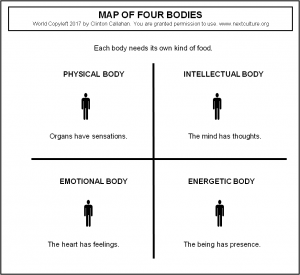How Fulfilled and Inspired are Your Employees?
Today more people are working in bureaucratic organizations than ever before. Between 1983 and 2014, the number of managers, supervisors and other employees in higher positions in the U.S. workforce grew by 90%. A similar trend can be found in Europe (Source: G. Hamel & M. Zanini). It seems that it was all about structuring and controlling the business world even more by establishing bureaucracy. While many CEOs decry bureaucracy, few can claim success in changing it. The denying forces that would like to reverse change as quick as possible are huge. Questions such as “How is this supposed to work without bureaucracy?” are common.
In his article “More of us are working in bureaucratic organizations than ever before“ Gary Hamel (www.garyhamel.com) put it in a nutshell: „It could be argued that in a world characterized by increasing complexity, the growth of bureaucracy is inevitable. Who but senior executives is going to address all those vexing new issues, like globalization, digitization, and social responsibility? Who else is going to meet all those new compliance requirements around diversity, risk mitigation and sustainability? This mindset has produced a surge in new C-level roles: Chief Analytics Officer, Chief Collaboration Officer, Chief Customer Officer, Chief Digital Officer, Chief Ethics Officer, Chief Learning Officer, Chief Sustainability Officer and even Chief Happiness Officer. And more prosaically, who, if not managers, is going to do the everyday work of planning, prioritizing, allocating, reviewing, coordinating, controlling, scheduling, and rewarding? Yet our research suggests that bureaucracy is not inevitable; it’s not the inescapable price of doing business in a complicated world. Rather, it’s a cancer that eats away at economic productivity and organizational resilience “
What does organizational resilience actually mean? In the New Work context it means that in the medium and long run an organization stands its ground to the degree the employees are able to act as a living organism.
A New Perspective on Organizational Resilience
Three important aspects of organizational resilience from a new perspective are health and inspiration of employees as well as the connected topic of conscious feelings. However, these three aspects are massively in short supply in the business world. Although companies offer health programs, sport programs, green oasis or other relaxation options, only few employees would say that their job really fulfills them. They are not nourished in their different bodies. What does this mean?
Four bodies can be distinguished (in some traditions even more): the physical body, the intellectual body, the emotional body and the energetic body (see picture below). The physical body is generally known. It is made of bones, muscles, nerves and has senses. The intellectual body is the mind with its thoughts, ideas and opinions. The emotional body comprises the emotional heart with feelings. The fourth body is the so called energetic body, representing the being, which has presence, vision, calling and inspiration.
While reading you might have noticed that you are familiar with two of the mentioned bodies – the physical and intellectual body – while the other two – the emotional and energetic body – are rather unknown.

Intellectual Body in the Business Context
In our modern, bureaucratic and performance-oriented society the intellectual body is usually well fed. Knowledge is constantly imparted at school, at university and at work and is in addition available any time thanks to the Internet and other media. There is a saying:Knowledge is power. If you know a lot and can prove professional competence, you can get far. That’s the motto. The problem with that is that the majority of employees mainly identifies with their mind, because in bureaucratic organizations turnover figures are still most important. Employees analyze, reason logically, calculate and spend a lot of time for logical problem solving. It is about understanding correlations, structuring procedures, optimizing processes and reaching targets so that the required turnover is reached in the end. In the business environment the intellectual body is fed through discussing, writing offers, having meetings, planning, working out strategies, designing things, visiting classes or workshops, attending conferences, leading a company or department, etc. The intellectual body of employees is therefore more than fed.
Physical Body in the Business Context
The physical body is also fed to a certain degree, yet rather during leisure time than at work. Food for the physical body is for example exercises, sports, nutritious food and regeneration including enough sleep and holidays. However, these components already represent a challenge. This already starts with the food. Many employees are under such a pressure that they make little to no time for breaks and eat oftentimes unhealthy and not tasty canteen food or fast food from the both next door. They also lack exercises. Sitting in the office and in meetings for 8 to 12 hours is everything else than beneficial for the physical body. It is true that some organizations provide fitness rooms or offer financial bonuses for sports classes during the employees’ leisure time. However, it is rather the minority of employees actually using these offers. Most employees come home from the office tired and exhausted and are only little motivated to do sports.
Yet, recovery, timeouts and relaxation are important. Inspiration and creativity can only arise if body and soul get time to recover. Exactly this is however a topic that is missed out in business life. Where performance and figures are in focus, relaxation is only possible if the time schedule allows it, which is usually not longer than 2 weeks. During this short holiday period many employees have difficulties to actually recover, especially because the unspoken expectation of being available for colleagues or the boss in case something urgent has to be clarified, is a burden on their shoulders.
Emotional Body in the Business Context
The emotional body is not nourished at all in the business world (and modern society in general). Nourishment for the emotional body includes e. g. expressing and using feelings authentically and responsibly, openness, vulnerability, compassion, listening without discussion, etc. Yet, especially the topic of feelings is a taboo in the business world because the attitude towards feelings is in modern society based on the assumption that feelings are not okay. If you show feelings at work then you are regarded as weak, unprofessional and not resilient. In total there are four big feelings territories that can be distinguished: anger, sadness, fear and joy. There are further words for feelings, but they usually fit into one of the big territories (e. g. nervousness belongs to the territory of fear, while resentment belongs to the territory of anger) or they are a mixture of feelings.
Based on the assumption that feelings are not okay it is not surprising that most of the people try to demonstrate pretended resilience by somehow suppressing, swallowing or numbing their feelings. However, instead of actual resilience, i. e. resistance to stress, they get weaker and weaker and end up with burnout or other mental diseases (take into consideration that these diseases could be based on a mixture of unconscious feelings that have been suppressed over a long time). In modern society and in business life resilience means to keep the numbness bar (the threshold where you actually start feeling a certain feeling) as high as possible by e. g. eating, watching TV, excessive sports, internet, social media, shopping, alcohol, cigarettes and other drugs. However, feelings that are just numbed out and are not consciously expressed will sooner or later show in degrading health.
A new perspective on feelings is instead based on the assumption that feelings are neutral energy and information that serve you, both in your job and in private life. They are like an inner navigation system that leads you unerringly through life.
Energetic Body in the Business Context
The fourth body is the so called energetic body. If you do not do any kind of yoga or mediation practice this body might be one of the biggest riddles. The energetic body is difficult to grab and cannot be explained logically, because it encompasses the being that has presence. In the common working environment the energetic body – as well as the emotional body – is usually excluded. Simply the work energetic is often said to be esoteric bullshit. However, the energetic body is essential in the scope of new work. The being does not only have presence, but is also a source of inspiration and vision. It is no wonder that this body is therefore suppressed in modern society and in the common business world. Employees, whose energetic bodies are regularly fed, will sooner or later resist encrusted structures that stand in the way of evolution. This is not supported at all by managers, who benefit considerably from bureaucratic structures. Employees who are present and follow their inspiration can no longer be manipulated.
The energetic body is nourished through evolution, creativity, tranformatory processes, development, sincere teamwork, community, appreciation of the individual being qualities (in contrast to manipulating praise) and through serving something greater and being your vocation in action.
The Answer to the Question HOW? is YES!
Now what? How should the four bodies of employees be fed in organizations? This is exactly a one of those common questions and it would be easy to say “It is not possible! This is a dream world!”
But like Gary Hamel puts it: „There’s no well-trodden path for building a post-bureaucratic organization. Busting bureaucracy requires finesse, not brute force. If you want to reduce the bureaucratic drag in your company, you’ll need an approach to change that is emergent, collaborative, iterative and prudent. The key: revolutionary goals and evolutionary means.“
So the answer to the question „How should it go?“ can only be: „YES!“ It is not about the HOW first. If you first want to have an answer to the HOW than you will still be at the same point in five years. You plan, research, analyze and estimate all eventualities in order to have security on how it goes, instead of simply starting and trying it. With a new kind of work and the establishing of a post-bureaucratic procedure, the commitment is in the foreground. Take into consideration that new possibilities and ways of creating arise as soon as you clearly commit to a new way. This is a universal law. The decision and the commitment come first. You don’t have to know how it goes (this might also sound like an apocalyptic nightmare for some managers). To be able to stand in nothingness and to do one step after the other using valuable feedback and coaching of colleagues, the environment, etc. is part of a huge competence in the scope of New Work.
Are you ready to help creating an organization, which allows that the employees are nourished in all four bodies and act in a relaxed way with inspiration and lightness?
Author: Nicola Nagel
Hint: You find more about “New Work” in the book „Edgeworker: Beyond Leadership – It is Time for the Management-(R)Evolution!“ from Nicola Nagel and Patrizia Servidio. Details about feelings and their great benefit can be found in the book „The Power of Conscious Feelings“ from Clinton Callahan.



Recent Comments